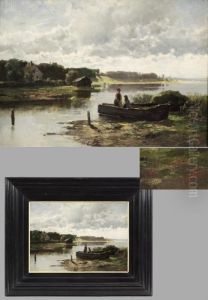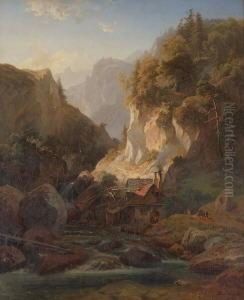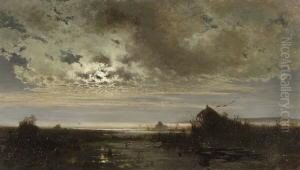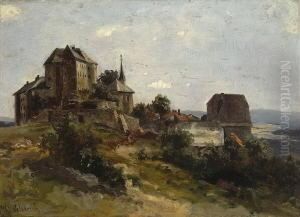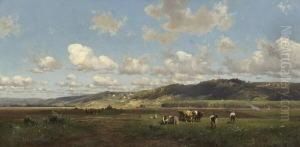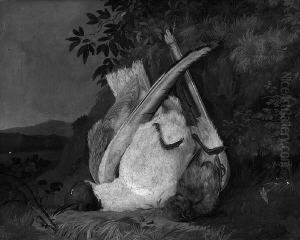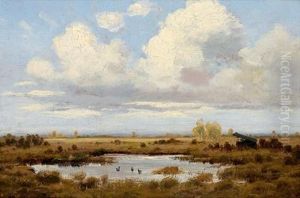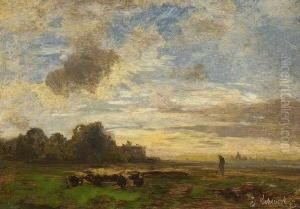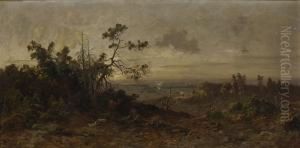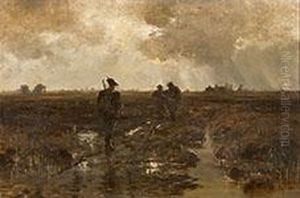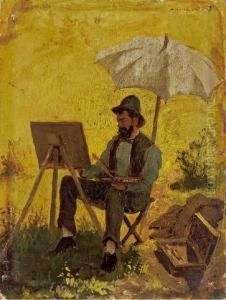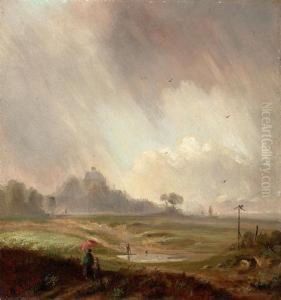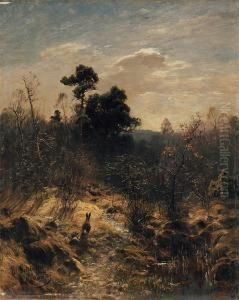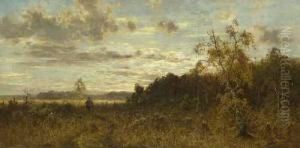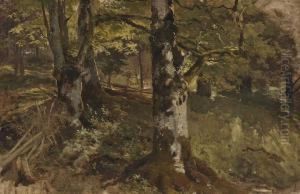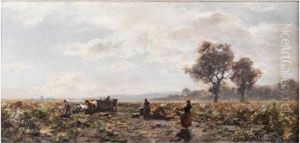Eduard Ii Schleich Paintings
Eduard Schleich the Elder, born in 1812 in Vilsbiburg, Bavaria, and died in 1874, was a pivotal figure in 19th-century German landscape painting. His work is closely associated with the Romantic movement, though his style evolved significantly over his career, reflecting the changing tastes and artistic sensibilities of his era. Schleich's early years were marked by extensive travel through the Bavarian Alps, Italy, and France, where he was deeply influenced by the majesty of natural landscapes and the works of the Old Masters.
Schleich's initial forays into painting were largely self-taught, although he later received formal training at the Munich Academy of Fine Arts. His early works were characterized by a strict adherence to nature and a fine attention to detail, typical of the Romantic ideal of landscape painting. However, as his career progressed, Schleich's style became more expressive and atmospheric, showing the influence of the Barbizon School, which emphasized mood and tone over detailed naturalism.
Despite facing financial difficulties and initial lack of recognition, Schleich's persistence in refining his craft led to increasing acclaim. By the 1850s, his work began to gain significant attention, culminating in appointments to various prestigious positions, including a professorship at the Munich Academy of Fine Arts. His later works are noted for their dramatic use of light and shadow, capturing the transient effects of atmosphere in the landscape, a precursor to the Impressionist movement that would sweep through Europe later in the century.
Schleich's contributions to landscape painting were not limited to his artistic output. He was a mentor to a number of younger artists, imparting his understanding of the emotional and technical aspects of painting. His legacy is marked by a bridging of the gap between the detailed realism of early 19th-century Romanticism and the more subjective, mood-driven approach of late 19th-century art.
Eduard Schleich the Elder died in 1874, leaving behind a body of work that continues to be celebrated for its depth, beauty, and influence on the landscape genre. His paintings are held in high regard and can be found in major museums and collections around the world, testament to his enduring impact on the art world.
